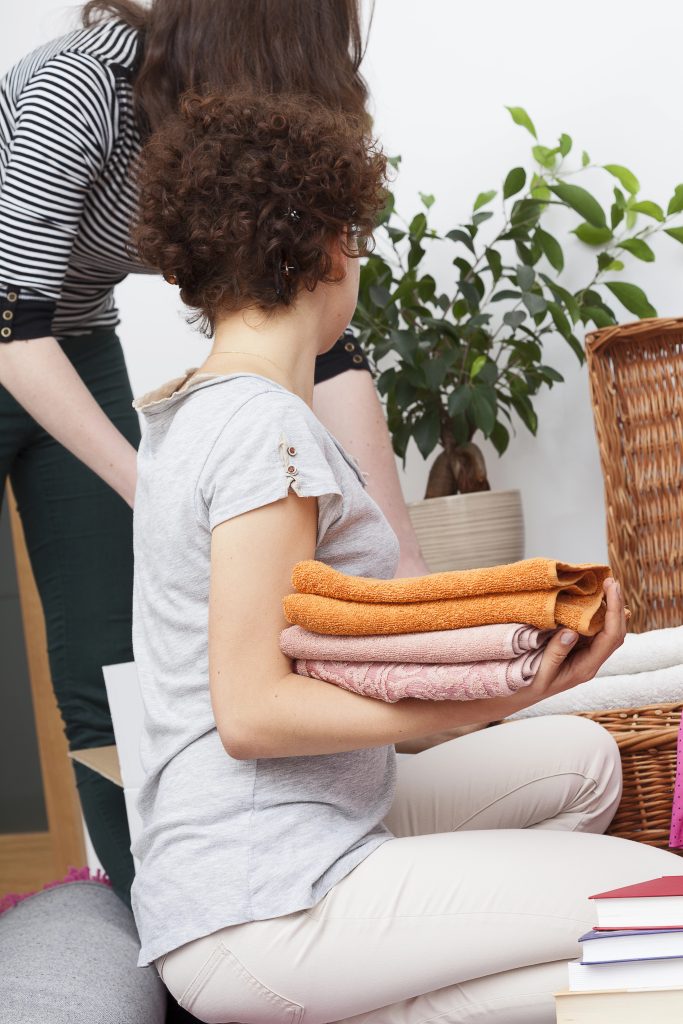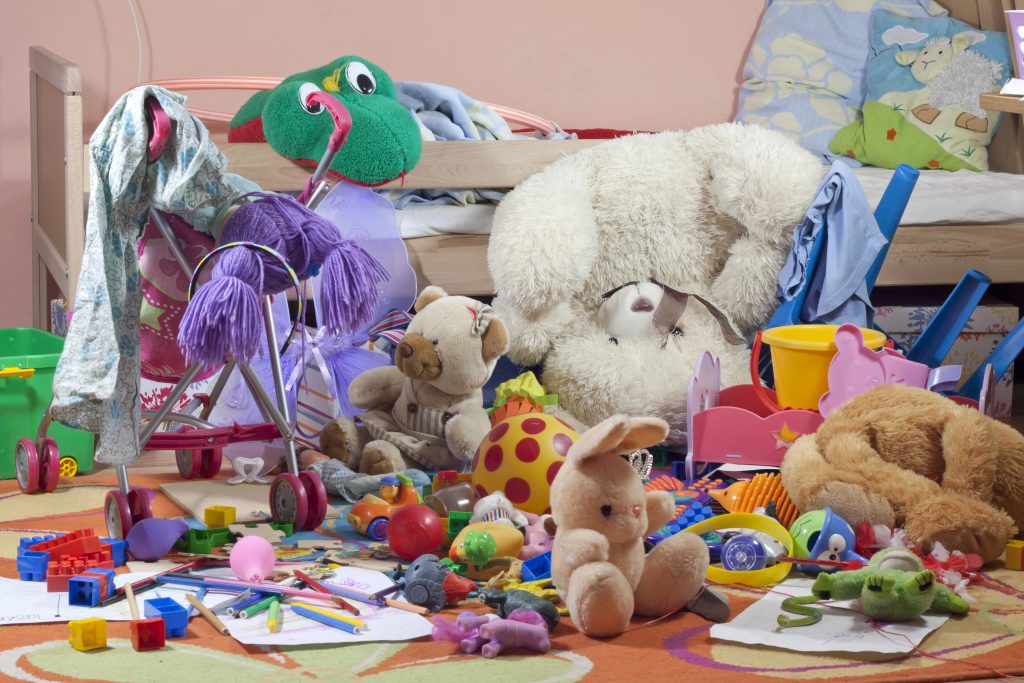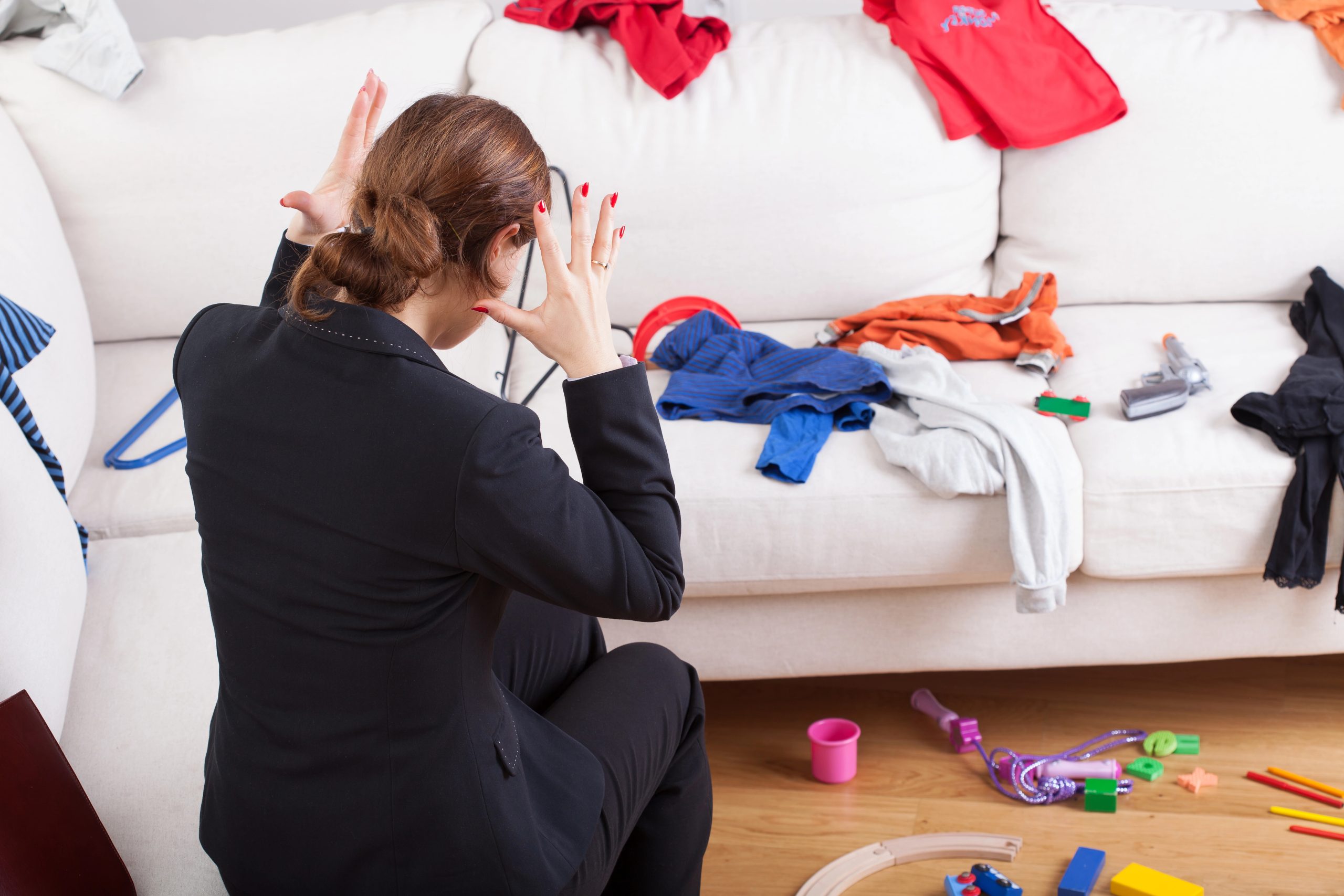If you have a family, and you’ve been trying to declutter, or maybe just thinking about decluttering, chances are it has been a source of stress. Does it feel like no matter what you do, your family continues to bring in more things? Or do they leave their stuff all over the house? Do they generally just not care at all about how the house looks, or how you feel about the state of the home? Well perk up because this post is for you!
Remember that YOU are the one who cares the most about it
That might be a harsh way to start out, but remembering that this is your priority and your project can help you lessen your frustration with your family. The reality is they don’t care, or at least just not as much as you do. Getting frustrated and trying to make them care isn’t getting your house decluttered or tidied, and it definitely isn’t helping your mental state. If anything, it’s just costing you mental energy that you could be using to declutter! Keep the perspective that this is your project and not your family’s. Which leads me to the next point.
Start with your stuff first
I don’t mean do a light clean out of your closet. I mean, declutter everything you have jurisdiction over and go borderline on the extreme! Get rid of anything you think you can live without. Don’t ask yourself if you use something, instead, ask, is there something else I could use instead. Think about having the least number of items that you can. Your family won’t notice a light clean out, but they will notice a drastic change in the amount of items that you own.
Don’t stop with your clothes. Consider places like the kitchen, under the sinks, your toiletries and makeup, the laundry area, and the storage areas. You may actually be surprised at the number of items you can get rid of in your house without even touching another family member’s items.
When your items are drastically less than the rest of the family’s, it helps your fam to take note. They will notice that the drawers have more room and that you are more at peace. Your family will see that your house is staying tidy, even though they are not helping. They will notice that it’s easier to find things and that you are able to tell them exactly where things are when they’ve lost them. It won’t clear out any of the clutter caused by the people in your family, but it will help them to notice a difference.
Casually mention the benefits you’re experiencing
If you’ve decluttered, and you’ve noticed that you haven’t missed anything, say so. If you are surprised at how easy it was, say so. Don’t nag about it, don’t beg your family members to do it, but just casually mention the reality that you’re living. When you verbalize the benefits that you’re experiencing, without pressuring your family to follow suit, they may just catch on. At the very least, they may open up to the idea of reducing their inventory. If that’s the case, then try moving on to the next point.
Casually point out the difficulties of clutter
One thing that I’ve noticed when it comes to clutter, is that most people avoid it. I don’t just mean that most people avoid cleaning it up. Most people will gravitate to the less-cluttered areas of the house. If that happens in your home, point it out. If your child stops playing in the playroom and moves their toys to your uncluttered space, try saying something like “I noticed that now that your playroom is so cluttered you’re wanting to bring your toys into this uncluttered space. Let’s get your playroom decluttered and tidied so you can have more fun playing with your toys in there.” If your teenager seems to become grumpier when their room is a mess, try pointing out that it seems to ruin their mood and offer to help them tidy and declutter. This idea of offering to help is one of the most transformative.
Offer to help

Body Doubling
Body doubling is simply coming alongside someone while they do a difficult task. When it comes to decluttering, it’s an enormously helpful tactic. Having another person present while decluttering can help a person manage the stress or the anxiety related to getting rid of things. Here are some strategies for helping…
Sit with your family member while they go through their own things. You can pull up the items for them and have them tell you yes or no, or you can just sit near them. Do not question their judgment. Whether it’s a spouse or partner, or your children, you want them to learn to trust their own judgment when it comes to what to keep and what to get rid of.
A big stressor for many when decluttering is second guessing what they’ve chosen to get rid of. They think maybe I’ll need this again, or maybe I shouldn’t get rid of this after all. Teaching our kids to work through that and gain confidence in their decision making is vital. Try to keep your mouth shut unless it’s an absolute must keep. If it’s a must-go in your book, don’t pressure them. Maybe they’ll be ready to let it go in the next session.
Children Under Five

If you have younger children less than five, then you are teaching them how to declutter when you declutter for them. This teaches our children that we don’t keep everything. You’re also showing them that in your home, you use an item for a season, and then move on. This is an important skill. Your child may protest and it may be difficult, but they will learn through the process, and it will be worth it in the long run.
Children Over Five
If your child is older than five, you definitely want to involve them in the process. You are teaching them a life skill. Decluttering is a part of life and it’s an ongoing process. It’s kind of like washing the dishes or doing the laundry – you’re never really done and that’s OK. In that light, use decluttering as a learning opportunity. One method is to give your children a box and offer them five dollars to fill it up. This isn’t bribery, it’s teaching your children to recognize how they truthfully value items. If your child would rather have the items than five dollars, you know what’s really important to them. However, if they easily fill up the box and exchange for a five dollar bill, you can trust that they’ve lost some degree of value for those items.
Declutter For Them
Another idea that I use often in my home is that I offer to declutter a room for my kids. I promise them that I will not throw away anything except obvious trash like wrappers and crumpled up papers. I take everything that I think they should declutter and put it in a box. I then straighten up their room and organize for them if necessary. I’ll include labels to show where their belongings need to go and get their room back in good working order.

I then take the box (or boxes) of items from the bedroom and place them in the basement with the child’s name on them. The kids are allowed to ask for anything back out of the box to put back in their room. However, they need to ask for the specific item by name and then I will give it back immediately.
What I have found is that they very rarely ask for anything back. This is also a great tactic for a playroom or even the toys in the garage. Kids may think they are attached to things , but when those items are no longer in the space and the space functions more smoothly, the items often aren’t missed. I will say, this is an opportunity to build trust with them in the decluttering space. If they ask for a specific item back, go ahead and give it back without arguing. When they see that you’re true to your word, they’ll be more likely to trust you to declutter for them the next time.
Try to Compromise
If your family won’t go for any of those ideas, try making a deal. Say something like “I know those things are important to you and you know that a tidy and decluttered home is important to me. Could we compromise?” You could offer to have a space where all of their items stay, and propose a place in the house where it must stay clutter-free. Agree to disagree about the effects of clutter on each of you.
Hopefully these suggestions are helpful for you as you continue on your decluttering journey! If you’d like more tips, check out our other blog posts HERE, and leave us your decluttering and organizing questions below for us to answer in future posts!


